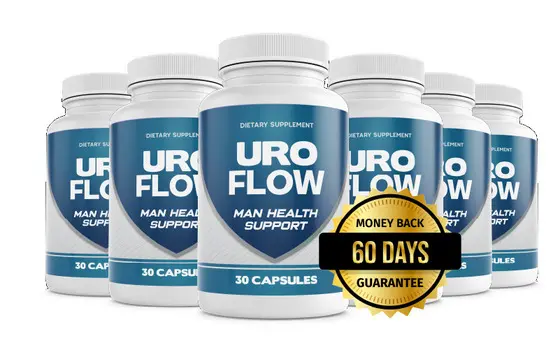We use cookies to personalise site content, social media features and to analyse our traffic. We also share information about your use of this site with our advertising and social media partners.
Posted by - healthcare withme -
on - 10 hours ago -
Filed in - Health -
12 Views - 0 Comments - 0 Likes - 0 Reviews

Urinary dysfunction is a common challenge affecting millions, especially men with benign prostatic hyperplasia (BPH) and individuals experiencing overactive bladder (OAB). Both conditions can severely impact quality of life with symptoms such as frequent urination, urgency, weak urine flow, and incomplete bladder emptying. Accurate diagnosis of the underlying cause is critical for effective treatment. One of the foundational diagnostic tools is the uroflow test, a non-invasive method to measure urine flow dynamics objectively.
In this comprehensive blog post, we will explore how uroflowmetry helps diagnose urinary dysfunction related to BPH and OAB. We will discuss the symptoms, test preparation, procedure, interpreting results, and how this test guides tailored treatment. Empowerment through understanding is the first step toward regaining control over bladder health.
BPH is an age-associated enlargement of the prostate gland, common in men over 50. The enlarged prostate compresses the urethra, causing difficulty in urine passage and resulting in lower urinary tract symptoms (LUTS).
Common symptoms include:
Weak or slow urine stream
Hesitancy starting urination
Dribbling at the end of urination
Frequent urination, especially at night
Urgency or difficulty fully emptying the bladder
BPH can cause bladder outlet obstruction, resulting in increased storage symptoms and voiding difficulties.
OAB is characterized by a sudden urge to urinate with or without urge incontinence, often accompanied by frequency and nocturia. It results from involuntary detrusor muscle contractions causing the urgent need to void.
Urgency with or without leakage
Increased daytime frequency
Frequent nighttime urination
Unlike BPH, OAB primarily involves bladder muscle overactivity rather than mechanical obstruction.
The Role of the Uroflow Test in Diagnosing BPH and OAB
Uroflowmetry measures the rate and volume of urine flow during voiding. This simple, non-invasive test generates flow curves and numerical data like maximum (peak) flow rate (Qmax), average flow rate, and voided volume.
In BPH, prostate enlargement narrows the urethra, leading to bladder outlet obstruction. This manifests as decreased maximum flow rates, prolonged voiding times, and characteristic flow curve changes.
Decreased peak flow rate (<15 mL/s)
Flattened or plateau-shaped flow curve
Increased post-void residual urine volume
Uroflowmetry helps differentiate obstruction from other causes of LUTS.
In OAB, despite no mechanical blockage, bladder contractions are involuntary and frequent. Uroflowmetry in OAB might show normal or slightly decreased flow rates but irregular voiding patterns.
Key findings include:
Normal or mildly reduced peak flow
Rapid, interrupted flow curves
Frequent voids with variable volumes
While uroflowmetry alone can't definitively diagnose OAB, it aids in excluding obstruction and complements symptom assessments.
Proper preparation is vital for reliable uroflowmetry:
Hydrate well 1-2 hours before the test to have a comfortably full bladder.
Avoid voiding immediately before the test.
Discuss medications with your physician that may affect urinary function.
Wear loose, comfortable clothing for ease of voiding.
Relax during the test and void naturally without straining.
The uroflow test usually occurs in a private area with specialized equipment:
Empty urine into the device which records flow parameters automatically.
Test duration is typically under 10 minutes.
Post-void bladder ultrasound may be performed to assess residual volume.
The machine generates flow curves instantly for physician review.
Normal flow: Bell-shaped curve; peak flow >15 mL/s; voided volume adequate.
Obstructive pattern: Slow, flattened flow curve; low peak flow; possible high residual volume.
OAB pattern: Possibly normal flow but frequent voids with variable volumes; interrupted curves.
Weak detrusor: Low flow rate despite no obstruction; long voiding time.
By combining uroflowmetry data with symptom scoring tools and clinical exam, physicians differentiate BPH from OAB or mixed pathology.
Treatment Implications Guided by Uroflowmetry
BPH treatments: Alpha-blockers relax smooth muscle to improve flow. 5-alpha reductase inhibitors shrink the prostate. Surgical options target improving urinary flow.
OAB treatments: Antimuscarinic drugs or beta-3 agonists reduce bladder overactivity. Behavioral therapies and pelvic floor exercises play a role.
Mixed cases: Combination therapies tailored according to objective and subjective findings.
Monitoring treatment response with follow-up uroflowmetry provides measurable evidence of improvement or need for adjustment.
Patient-reported outcome measures such as the International Prostate Symptom Score (IPSS) and voiding diaries complement uroflowmetry by providing symptom severity and frequency data.
Follow preparation instructions closely.
Keep a symptom diary alongside uroflow tests.
Communicate openly with your healthcare provider.
Report any changes or new symptoms promptly.
Emphasize adherence to prescribed treatments.
Emerging technologies allow at-home uroflow testing with app integration, enabling patients to measure and transmit flow data remotely. This improves convenience, monitoring quality, and patient engagement in chronic urinary disorders.
The uroflow test is a cornerstone diagnostic tool in managing BPH and OAB. Combined with clinical history, symptom scoring, and complementary assessments, uroflowmetry enables tailored treatments to alleviate symptoms and improve quality of life.
Proper preparation and understanding your test results empower you in your care journey. If you experience urinary symptoms, discuss uroflowmetry with your healthcare provider to take positive steps towards better urinary health.
By embracing objective testing and personalized care, effective management of urinary dysfunction is within reach.
Click here to visit the official website

“To assist disaster survivors by providing a source for them to come together in time of need, to aid in the listing of events, information and other forms of assistance, and continuing support through the recovery process.”
Share this page with your family and friends.